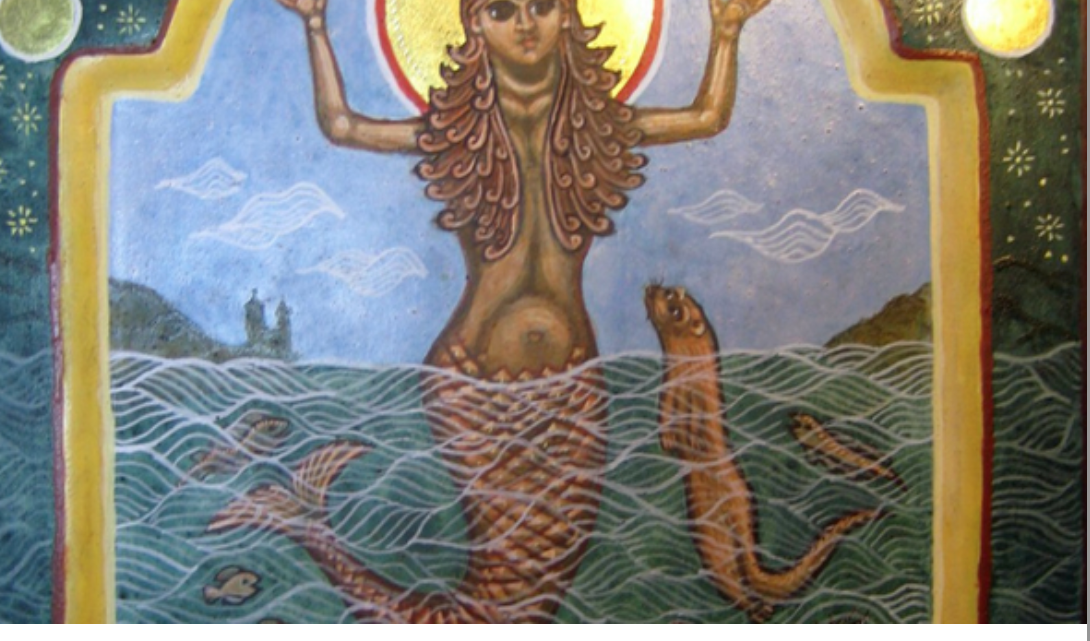
Mermaids and churches…who knew! While in my last post I spoke about how mermaids were taken over by the church to use as a symbol of sin, (and don’t forget the blog about mermaids related to Cain’s bloodline) this time, we swim around a mermaid who was baptized into a saint and touch base on a book and another folklore that all seem tied together or at least inspired a Best-selling novel in 2005.
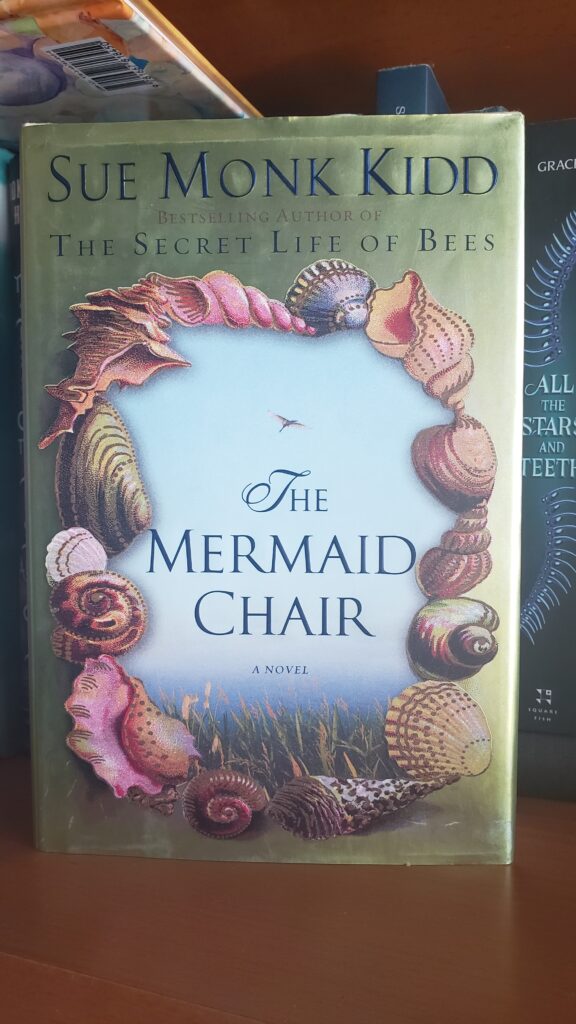
‘The Mermaid Chair’, a 2005 Best Selling Novel by the talented Sue Monk Kidd (of the famed ‘The Secret Life of Bees’ novel) brought back attention to a lost classic Mermaid folktale that takes place in Cornwall, England, The Mermaid of Zennor.
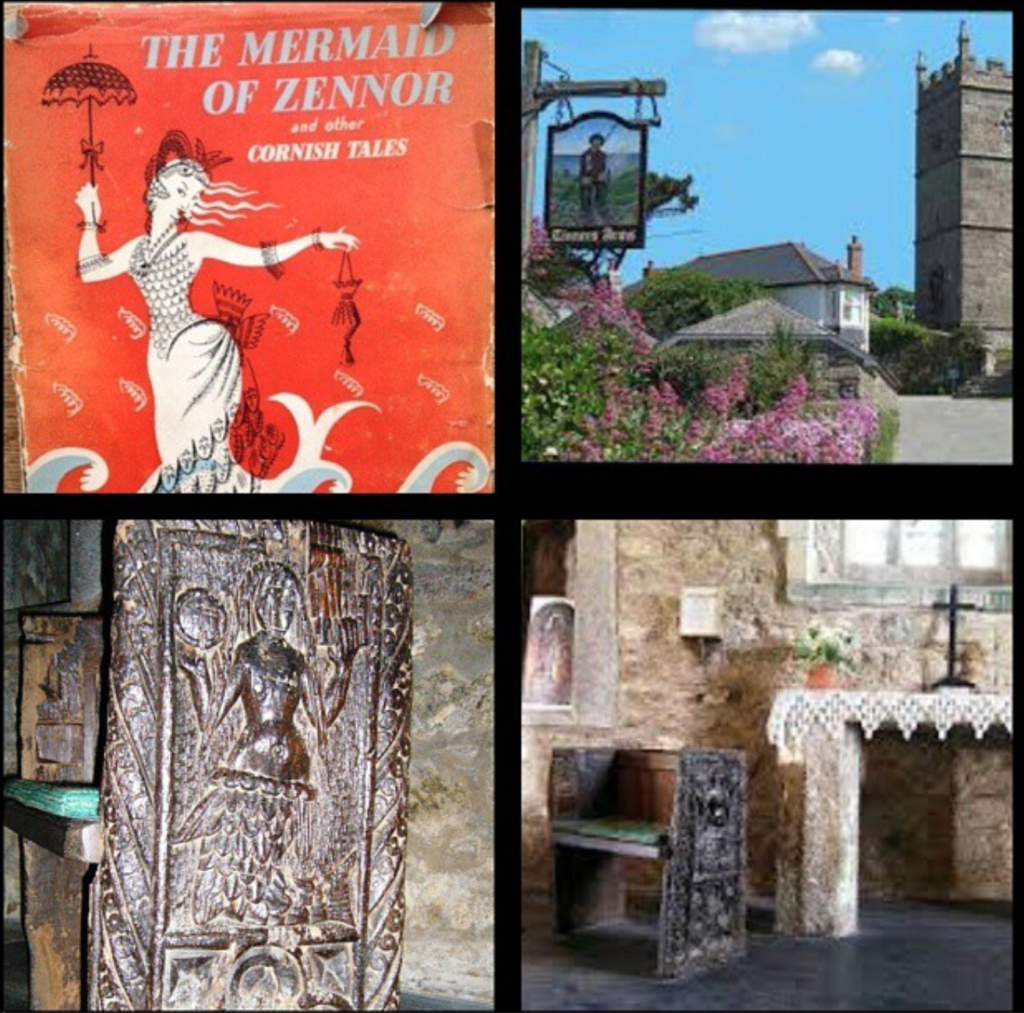
A mermaid was carved in the back of one of the pews in a
church in the Cornish village of Zennor, which remains to this
day (pictured in the bottom boxes) to honor the legend of the
Mermaid of Zennor. A local man, Matthew Trewella, was a
wonderful singer in the church choir, and it is said that the
mermaid herself carved the figure while she listened to Matthew
sing. She had fallen for his voice. They fell in love, and he left our world to join her in the sea,
living still today with his mermaid. Its rumored they still visit the church and sing to visitors.
An extended version of this story and other changes includes:
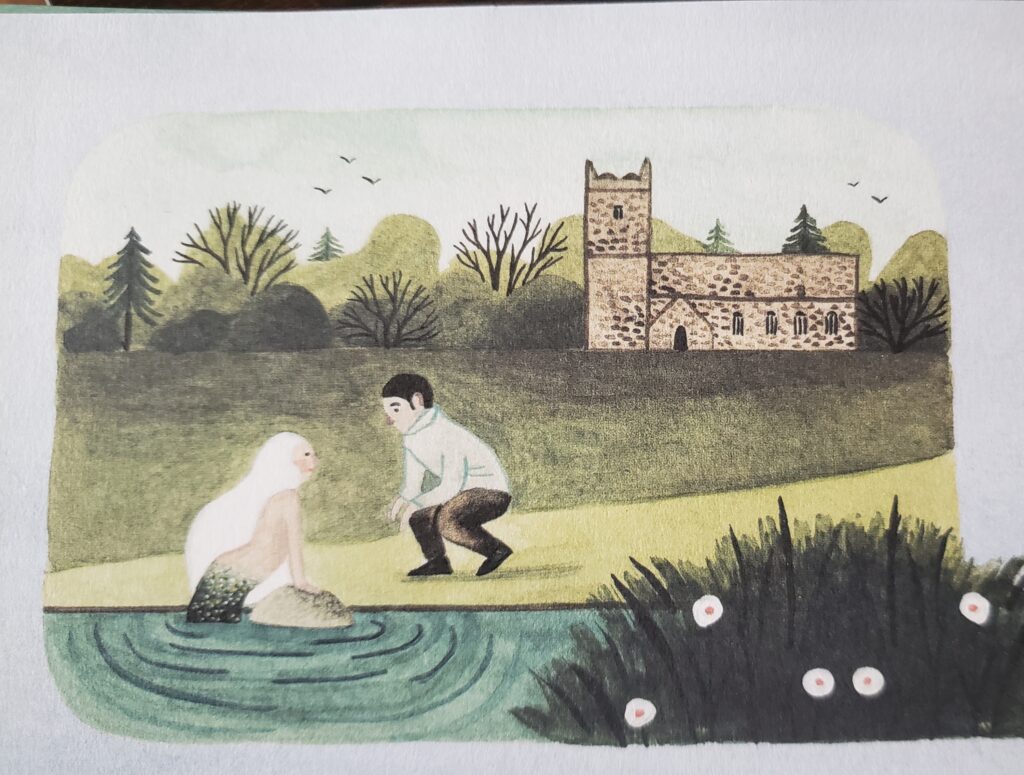
Years later when a ship’s anchored near Zennor, a mermaid hailed the captain with her charming voice. She asked him to lift his anchor since it was perched on her roof in her underwater home she still lived in with Mathew Trewella. Her name was Morveren, and she was the daughter of the sea king Llyr. It is rumored that fishermen can still hear Mathew Trewella singing soaring over the waves. If he sings high, the seas are to be smooth, and if low the waves will be rough.
So, what does this have to do with a mermaid turned saint? Not much. Shockingly, the mermaid chair in the church doesn’t depict the Mermaid Saint Muirgen. Here is her tale:
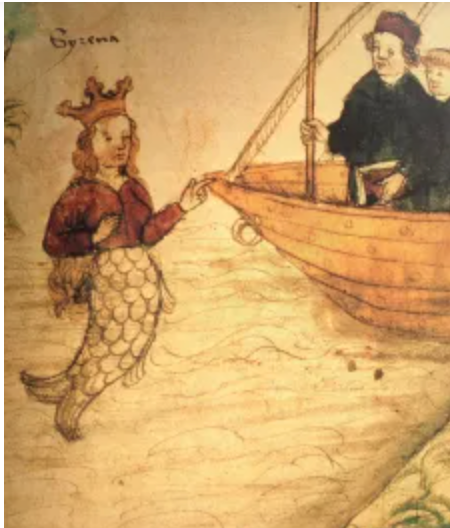
The 12th-century Lebor na h-Uidri (Book of the Dun Cow) goes into more details … however, she was originally the daughter of an Irish king whose palace fell into Loch Neagh. It drown the king and trapped her underwater in the sunken palace for a year. The confined maiden prayed to the pagan goddess Danu to turn her into a salmon. And while her lower half did indeed become that of a salmon, her upper half remained that of a woman. (Talk about doing a half-assed spell, but I guess this is another way to have created a mermaid.)
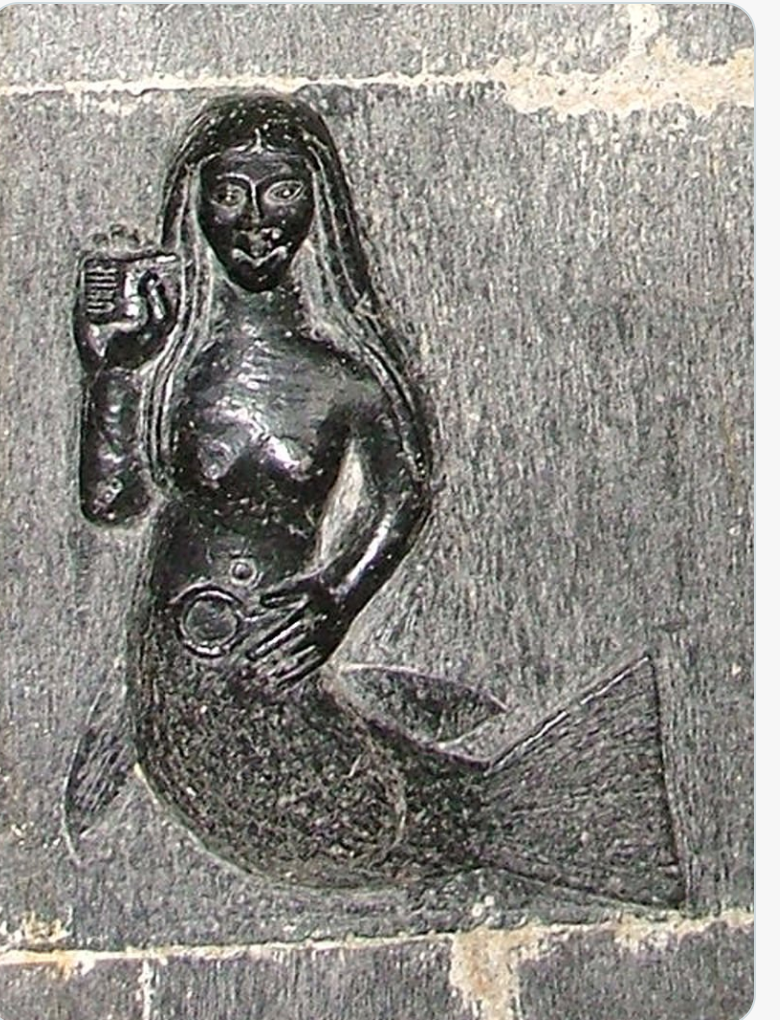
Co Galway. Built in 12th century at the site of an earlier 6th century church founded by St Brendan the Navigator.
In this form she spent the next three hundred years in Loch Neagh before encountering a boat full of Irish monks. Getting tangled in their fishing net, she heard the Gospel for the first time while they were pulling her free. She promised to return to shore at the monastery a year from that day, and upon doing so gave up the rest of her extended mermaid life (another three hundred years) in exchange for Baptism and an immortal human soul. She died shortly thereafter, and her soul was taken to Heaven. Her Feast Day is on the date of her original capture, and her Baptism and death one year later: January 27th.
In Sue Monk Kidd’s novel, the saint mermaid is St. Eudoria and is not a real saint in the Catholic Church, though Kidd mentions she did base her story on accounts of saints who mutilated their bodies in the pursuit of holiness. However, in ‘The Mermaid Chair’, the legend of Sedna is in fact a genuine Native American tale from the Inuit people, which like most tales of mer and water folk, there are several variations.
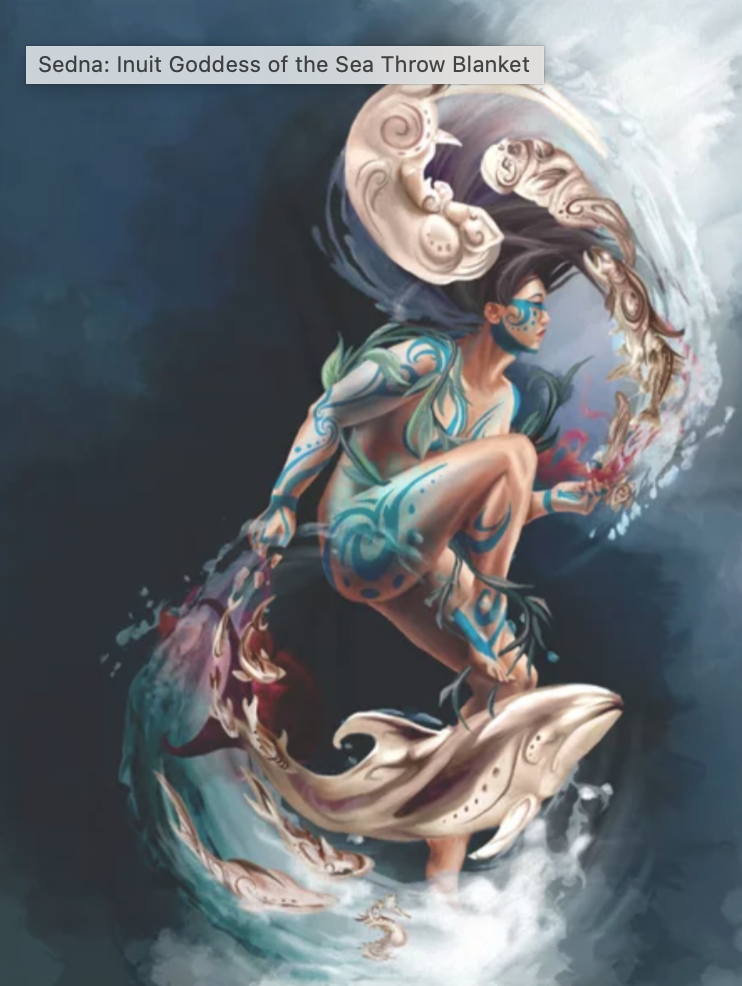
Sue Monk Kidd states in her Author’s Note that it was a chance comment by a friend who had just visited the “mermaid chair” while traveling England. Kidd continues, ” The chair sits in St. Senara Church in the ancient village of Zennor, in the beautiful and magical land of Cornwall. The chair is made from two fifteenth-century bench ends, one of which is carved with a mysterious mermaid. Little historical information is available about St. Senara, the saint for whom the Cornish church is named, but I was intrigued by a legend suggesting that before Senara’s conversion, she was a Celtic princess named Asenora. Armed with these two morsels of inspiration – the historical mermaid chair and the bit of lore about Senara and Asenora – I began to weave my own story.
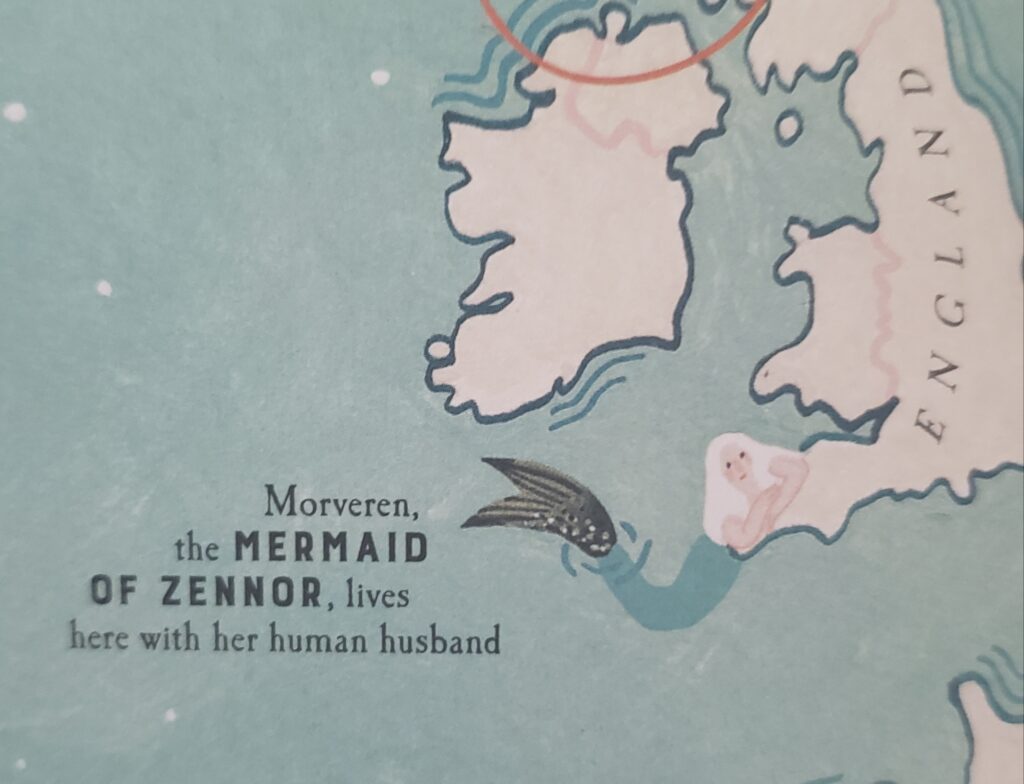
While we have a fable tale of a mermaid tied with an engraved pew in a church in England, it should not be mistaken for the actual St. Muirgen herself of Ireland. Carvings of the Saint Mermaid are apparently all over churches and abbey’s in Ireland.
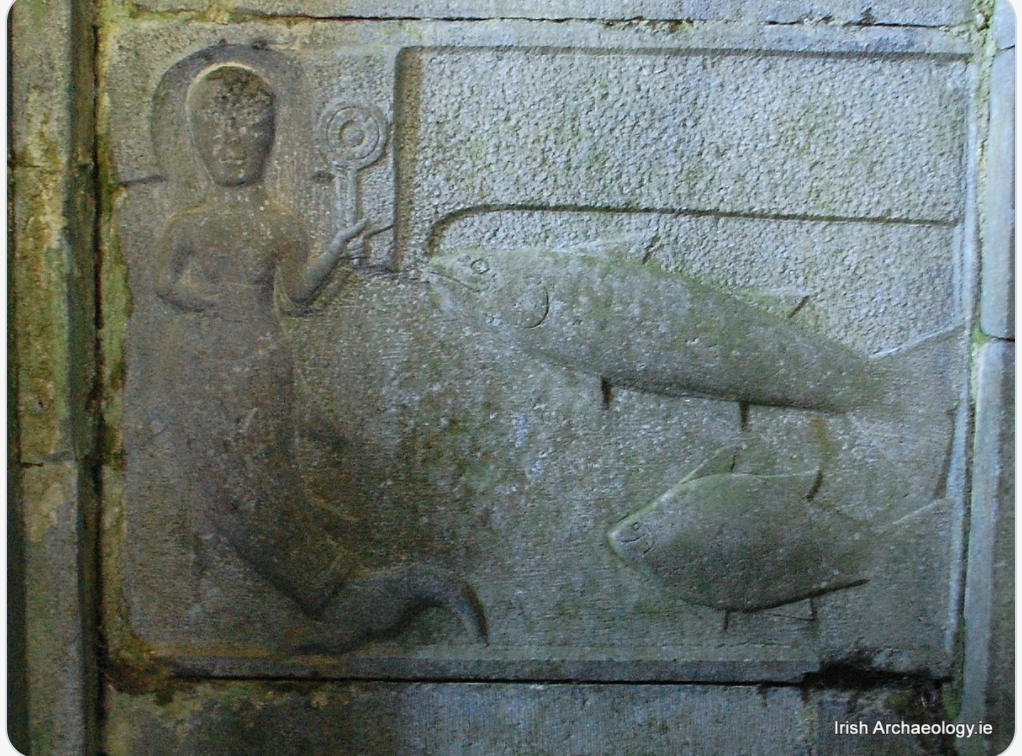
Who else wants to travel to Ireland and see all these fascinating mermaid carvings of a saint? I know I do and it’s definitely on the roster for locations for Mermaid History Traveling show.
Here is a little more in depth on our Saint Mermaid story:
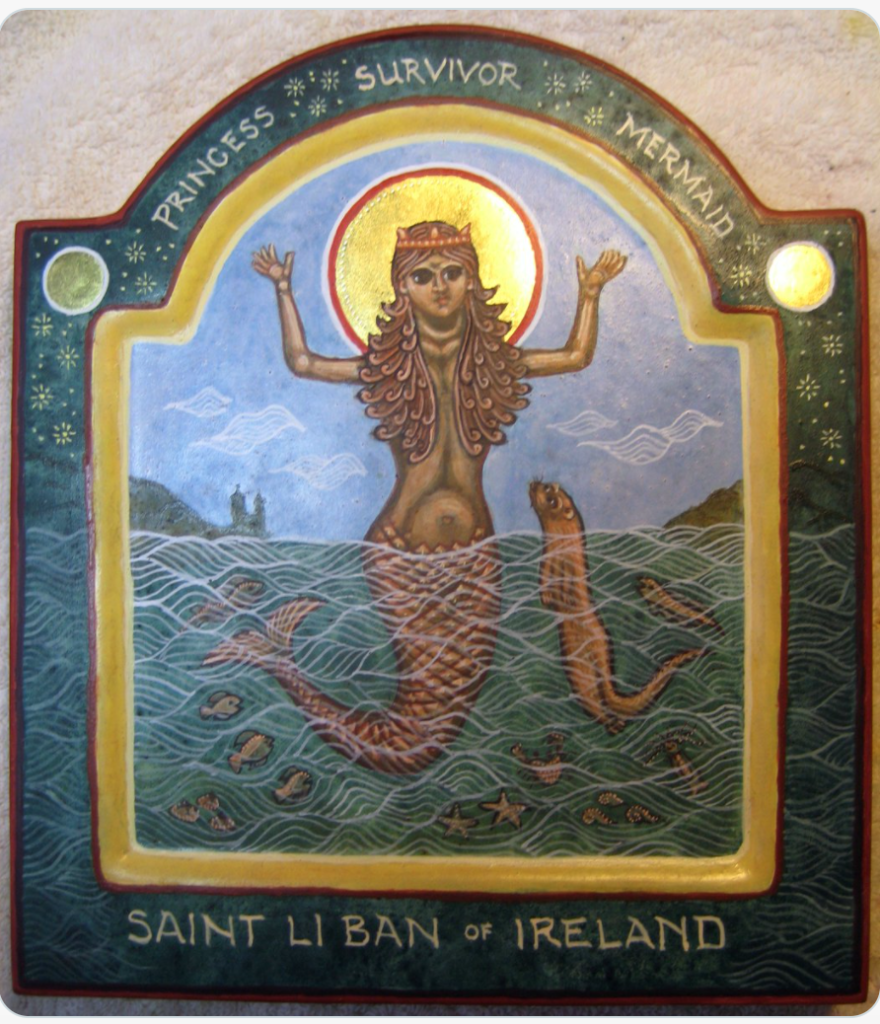
Lí Ban was the daughter of Eochaidh, King of Ulster. She and her pet dog were the only ones to survive when Eochaidh’s palace and lands were flooded, drowning all who lived there and forming the great body of water we know today as Lough Neagh.
For a year she lived alone in a bower under the lough with only her dog for company. Then, in her loneliness, she prayed to the goddess Danu asking to be turned into a salmon so she might swim with the fish of the sea for company. Danu only half granted her wish. The little dog became an otter, and Lí Ban was turned into a mermaid.
Lí Ban swam out of the lough, along a great river, and into the open sea, and there she drifted for the next three hundred years fulfilling the prophecy:
Liban will swim eastwards, westwards, hither, thither, over each sea.
By the time 300 years had passed, Comgall had founded his great monastery in what is now Bangor, County Down, on the far northeast coast of Ireland. It was known as Bangor Mór and soon became revered throughout Ireland for its saintliness and learning. Young men came from every corner of the land to study there.
It happened that one-day Comgall sent Beoan and some other monks to Rome with a message for Pope Gregory and while they were at sea Beoan caught Lí Ban in his fishing nets. She promised to return within one year.
When a year passed, she came ashore, and Comgall baptized her with the name Muirgen. She died not long after, Comgall having promised her a heavenly reward and she became known as the Mermaid Saint.
You can still find memories and stories of Lí Ban today. The ancient abbey is long gone but if you go to Bangor you will find a new abbey, where Comgall is remembered still. A handmade quilt hangs on the transept wall, and in one of its squares, you will find the mermaid saint floating on the crest of a sea wave.
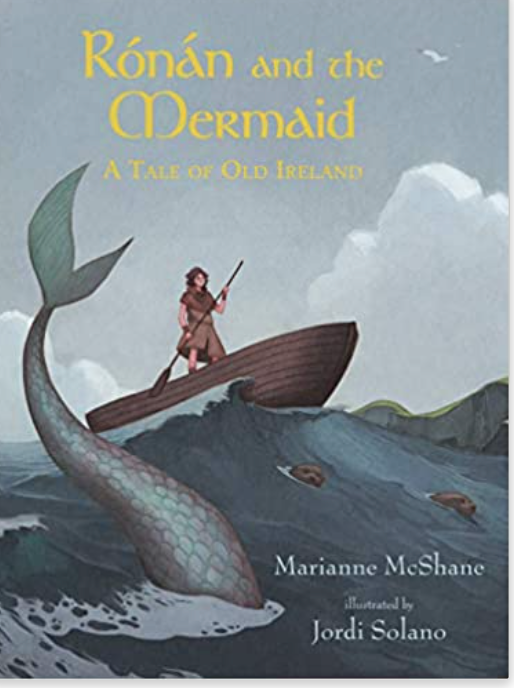
Right here is the perfect webpage for everyone who would like to understand this topic. You understand a whole lot its almost tough to argue with you (not that I really will need toÖHaHa). You certainly put a fresh spin on a subject that has been discussed for a long time. Wonderful stuff, just excellent!